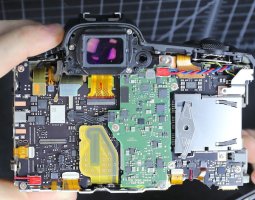L
Loswr
Guest
You keep claiming this, and never cite any sources (other than your own purported vast experience). While ILCs, like other high-end goods, are priced based on value marketing, parts replacements are generally based on the cost of goods and the labor to replace them. Since the labor to replace a sensor is unlikely to be significantly affected by whether or not that sensor is stacked, BSI or standard CMOS, how do you explain the 10-fold cost difference charged by multiple manufacturers for stacked sensors?Pricing of high end items are determined by "Value Marketing". Not raw material cost. The price of the device doesn't have anthing to do with the individual component material prices. If it did, the camera would cost about $400. Stacked sensors are cheaper to manufacture than plan BSI CMOS sensors. Why? Because the supporting electronic componentes that must be included. CMOS sensor don't operate in a vacuum. Stacked sensors have the supporting electronics in the layer beneath. The electronics layer. Manufactured in the the second layer run.
Your assumption seems to be based on the logic that it must be cheaper to include the DSP/ADC/DRAM in a second die fabricated and bonded to the photodiode-containing die. Here's the main board of the R5, where the DSP/ADC/DRAM are all independent chips that are off-sensor and located on the main PCB. I have no idea which of those chips are which, but clearly none of those chips are anywhere near the size of a FF sensor over which that circuitry must be spread in a stacked sensor. The individual, dedicated ICs would seem to use much less silicon, and be much easier to fabricate.

Here's simple question – Sony has been using stacked CMOS sensors in a few of their cameras since 2015. If they're so much cheaper to make, why don't they use them in all their cameras?
Upvote
0
